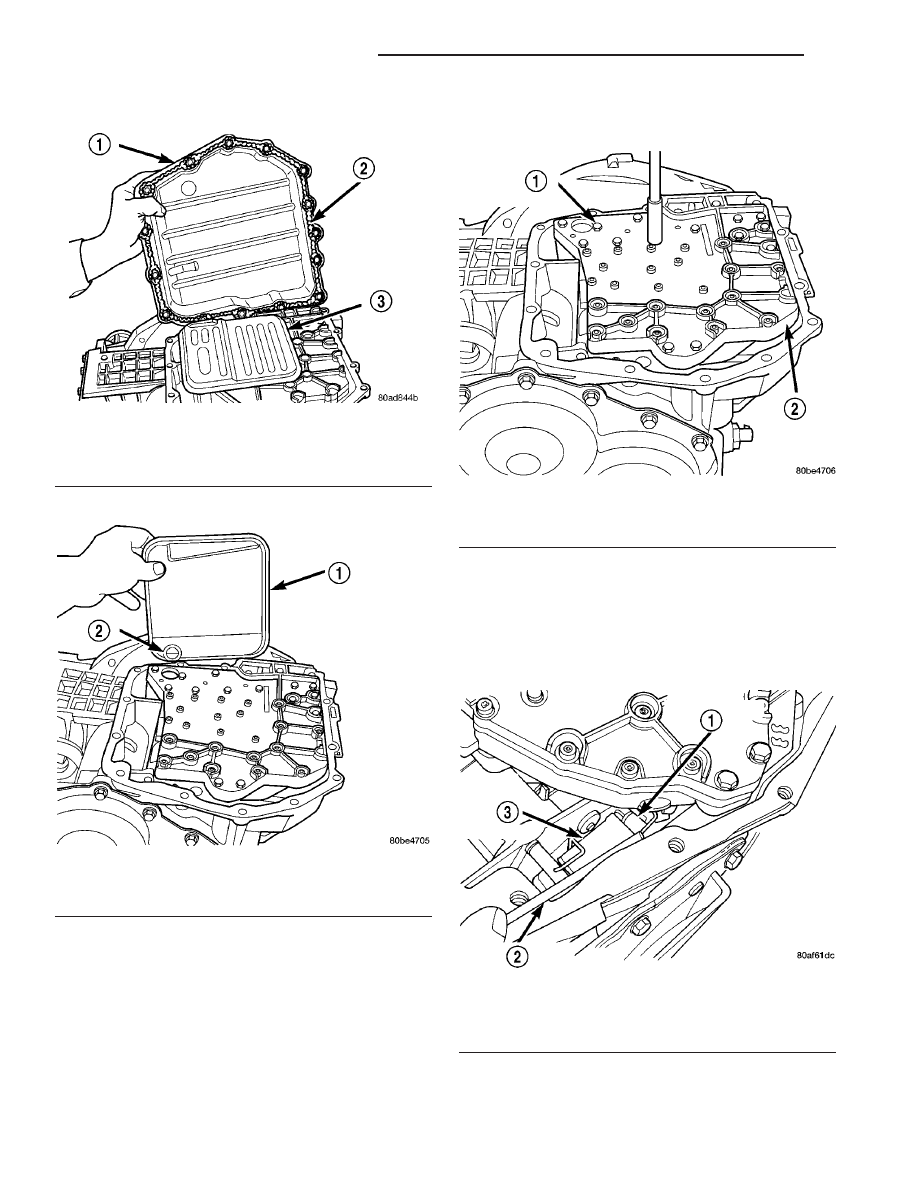Chrysler PT Cruiser. Manual - part 877

(10) Remove oil pan (Fig. 364).
(11) Remove oil filter (Fig. 365).
(12) Remove the valve body-to-transaxle case bolts
(Fig. 366).
NOTE: To ease removal of the valve body, turn the
manual valve lever fully clockwise to low or first
gear.
(13) Remove park rod rollers from guide bracket
and remove valve body from transaxle (Fig. 367) (Fig.
368).
Fig. 364 Oil Pan
1 - OIL PAN
2 - 1/8 INCH BEAD OF RTV SEALANT
3 - OIL FILTER
Fig. 365 Oil Filter and O-Ring
1 - OIL FILTER
2 - O-RING
Fig. 366 Valve Body-to-Case Bolts
1 - VALVE BODY ATTACHING BOLTS (18)
2 - VALVE BODY
Fig. 367 Push Park Rod Rollers from Guide Bracket
1 - PARK SPRAG ROLLERS
2 - SCREWDRIVER
3 - PARK SPRAG GUIDE BRACKET
21 - 462
41TE AUTOMATIC TRANSAXLE
PT
TRANSMISSION RANGE SENSOR (Continued)